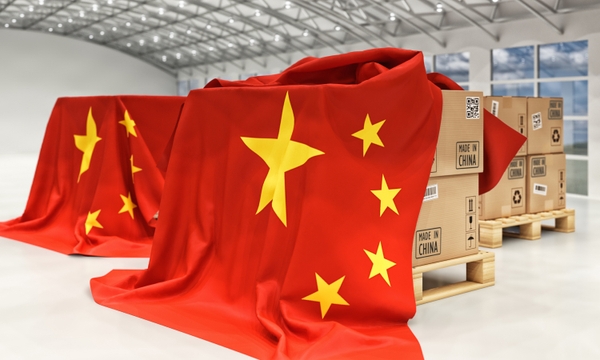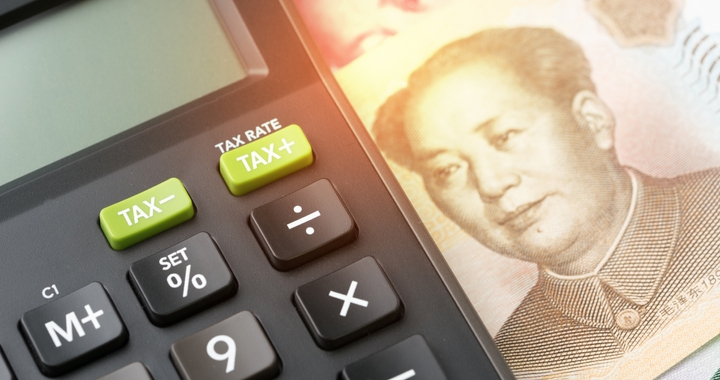How to export your goods to China? [guide 2022]

Exporting goods to China can be a very complex process that involves various steps you need to constantly be on top of. In this guide, we give you everything you need to know to successfully export your goods to China.
The Chinese tax system

The Chinese tax system is complex, with a large number of different taxes levied at the national, provincial, and local levels. The main taxes are income tax, value-added tax (VAT), business tax, consumption tax, and land value-added tax.
Income tax
Income tax is levied on both individuals and companies at progressive rates. The standard rate is 20%, but there are a number of deductions and allowances that can reduce the amount payable.
Value-added tax (VAT)
VAT is a goods and services tax that is charged at a flat rate of 17%. Businesses must register for VAT if their annual turnover exceeds RMB 500,000 (US$79,000).
Business tax
Business tax is payable on the profits of businesses. The rate depends on the type of business but is generally 3%.
Consumption tax
Consumption tax is levied on the sale of goods and services. The rate varies depending on the good or service but is generally between 5% and 20%.
Land value-added tax (LVAT)
Land value-added tax (LVAT) is a new tax that was introduced in 2008. It is charged at a rate of 0.5% on the assessed value of the land.
Changes to China Import Regulations
Since the beginning of 2018, there have been several changes to China's import regulations. These changes include new tariffs on certain goods and a stricter review process for all imported items.
New tariffs on certain goods
The new tariffs went into effect on January 1st and apply to a wide range of goods, including industrial supplies, electronics, and cars. The tariffs are in retaliation for the US' own tariffs on Chinese goods.
Stricter review process for imported items
A stricter review process is being put into place to ensure that all imported items meet China's safety and quality standards. This process includes a more thorough inspection of all items and a longer review period.
These changes are likely to impact businesses that import goods into China. They will need to be aware of the new tariffs and review process and make any necessary adjustments to their plans.
The changes to China's import regulations are just one example of the mounting trade tensions between the US and China. These tensions could have a significant impact on businesses around the world. It is important to stay informed of developments in this area and take any necessary precautions.
Imports classification
Import classification refers to the categorization of goods imported into a country according to the type of product and its corresponding duty rate. It is an important part of customs administration, helping to protect the domestic market and regulate trade.
In China, imports are classified into three categories: general goods, special goods, and prohibited goods.
General goods
General goods are those that fall into the category of everyday use items, such as food, clothes, and home appliances. They are subject to a uniform tariff rate.
Special goods
Special goods are products that have a specific usage or are difficult to produce in China, such as cars and luxury items. They are subject to a higher tariff rate.
Prohibited goods
Prohibited goods are those that are illegal to import into China, such as weapons and drugs.
Import licenses

In order to import goods into China, you may need a license from the Chinese government. The type of license you need depends on the good you are trying to import and the quantity you are trying to import.
There are several different types of licenses, and the application process can be complicated. Furthermore, import licenses can be expensive, so it is important to make sure that you actually need one before applying. If your goods are subject to customs duties, you will also need to pay those duties when your goods arrive in China.
The following is a list of some common types of import licenses in China:
General Import License
This license is for goods that are not subject to special restrictions. The application process is relatively simple, and the license is valid for one year. Restricted Import License This license is for goods that are subject to special restrictions, such as weapons or pharmaceuticals. The application process is more complicated, and the license is valid for a specific period of time.
Quota Licenses
This type of license is for goods that are subject to import quotas. The application process is complicated, and the license is valid for a specific period of time. Pre-Shipment Inspection License
This type of license is for goods that will be subject to a pre-shipment inspection. The application process is complicated, and the license is valid for a specific period of time.
Transit License
This license is for goods that are in transit through China. The application process is simple, and the license is valid for one year.
If you are unsure whether or not you need a license to import goods into China, you can contact the Chinese Customs Authority for more information.
What is required to apply for an import license
In order to apply for an import license in China, you will need to provide certain documentation and information to the Chinese authorities. This includes your company's business license and articles of incorporation, as well as a description of the products you wish to import.
You will also need to provide a detailed plan for how you intend to market and sell the products in China. Finally, you will need to demonstrate that your company has the financial resources necessary to support the import operation.
Specifically, you need the following:
- Importer’s company name and company number
- Consignee in China
- Automatic import license number and expiry date
- Terms of trade and of foreign exchange
- Place of clearance
- Country/region of exportation and of origin
- Use of goods
- Description of goods and product code of goods
- Specification, unit, quantity, unit price
- Supplementary details
- Issuing authority stamp
The application process can be complicated and time-consuming, so it is important to start the process well in advance of your planned import date. The Chinese authorities will review your application and may request additional information or documentation. Once your application is approved, you will be issued a license to import goods into China.
Conclusion
There are many benefits to exporting to China, including large market potential, low labor costs, and a strong manufacturing base. However, there are also some challenges to doing business in China, such as the complex regulatory environment. Exporters should carefully assess the risks and rewards of exporting to China before making a decision.
If exporters can navigate the challenges and take advantage of the opportunities, exporting to China can be a very successful venture.


